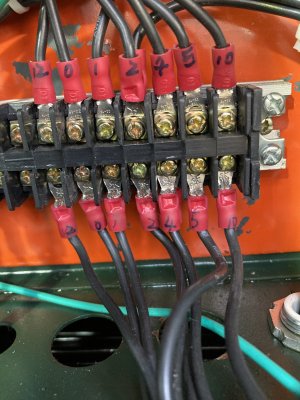Gearhead88
Ultra Member
The problem I have with the drawings you have sent is , It's not wired like that , some of it is nice to look at , however this one is different , this is the Grizzly ?You know I sent you a much better diagram in colour... I'll repost below.
There is a master switch too. But it is interlocked with spindle speed direction switches. I sent you a detailed post describing the order of the activation of the safety circuit that energizes the KA contactor and turns on the main power light. I can repost it if you can't locate the reply
View attachment 20522
View attachment 20523
View attachment 20524
View attachment 20525
I downloaded the Drawing of the grizzly weeks ago , close but not the same either.




